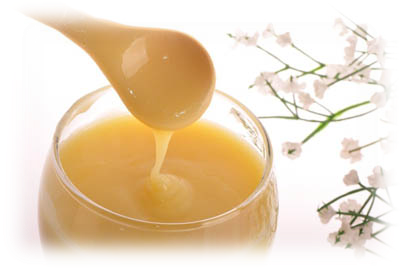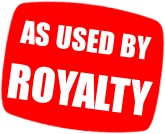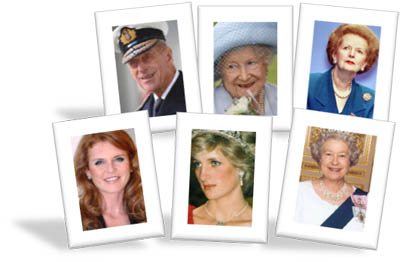|
|
 Royal jelly is a honey bee secretion that is used in the
nutrition of larvae, as well as adult queens. It is secreted
from the glands in the hypopharynx of worker bees, and fed
to all larvae in the colony. Royal jelly is a honey bee secretion that is used in the
nutrition of larvae, as well as adult queens. It is secreted
from the glands in the hypopharynx of worker bees, and fed
to all larvae in the colony.
When worker bees decide to make a new queen, either because
the old one is weakening, or was killed, they choose several
small larvae and feed them with copious amounts of royal
jelly in specially constructed queen cells. This type of
feeding triggers the development of queen morphology,
including the fully developed ovaries needed to lay eggs.
An incredibly creamy, opalescent white liquid, worker bees
make royal jelly for the exclusive nourishment and
cultivation of the queen bee. It is this remarkable
substance that transforms a common honeybee into a queen.
Considered the most precious gift of the hive, royal jelly
is incomparable in its ability to enhance both physical and
mental performance. Consider what it does for the queen bee
-
 She measures 17 mm in length and weighs 200 mg. She measures 17 mm in length and weighs 200 mg.
-
A worker bee measures 12 mm in length and weighs 125 mg.
-
Each day she lays from 2,000 to 2,400 eggs, which weigh
a total of 200 times her own body weight. During her
lifetime, she will lay more than two million eggs.
-
Even though she is hatched from the same egg as a
honeybee, she will live from four to five years compared
with one to two months for the honey bee.
Known users of Royal Jelly include...
-
 Sarah,
Duchess of York has been eating Royal Jelly as an
aphrodisiac Sarah,
Duchess of York has been eating Royal Jelly as an
aphrodisiac
-
Princess Diana used it against morning sicknesses in
pregnancy with William
-
Queen Elizabeth is eating royal jelly “to stave off
fatigue”
-
Prince Philip believes royal jelly cured his arthritis
-
Princess Margaret, once suffered chronic fatigue,
regained her optimism, zest and energy
-
In 1988, then-UK PM Margaret Thatcher discussed the
qualities of Royal Jelly
-
According to Buckingham Palace sources, the entire royal
family takes it for vitality and endurance
A Treasury of Active Compounds
Royal jelly is a complex mixture of compounds that contains
roughly 12 percent protein, 5 percent lipids, and 12 to 15
percent carbohydrates. It is remarkably rich in natural
hormones and B-vitamins. In addition, royal jelly contains
an impressive array of seventeen amino acids, including the
eight essential amino acids, and is particularly rich in
cystine, lysine, and arginine. Royal jelly contains 16
percent aspartic acids, which are absolutely essential for
proper tissue growth and regeneration. Gelatin, another
component, is a primary precursor of collagen, a potent
antiaging compound that helps keep our skin looking
youthful.
Royal jelly contains the health benefits because of
components such as B-complex vitamins such as pantothenic
acid (vitamin B5) (which has been associated with reversing
some of the effects of aging, such as greying hair) and
vitamin B6 (pyridoxine).
The overall composition of royal jelly is 67% water, 12.5%
crude protein, including small amounts of many different
amino acids, and 11% simple sugars (monosaccharides), also
including a relatively high amount (5%) of fatty acids. It
also contains many trace minerals, some enzymes,
antibacterial and antibiotic components, and trace amounts
of vitamin C, but none of the fat-soluble vitamins, A, D, E
and K. Royal jelly also contains DNA (Deoxyribonucleic acid)
and RNA (Ribonucleic acid), the "very stuff of which life is
made."
Royal jelly contains vital fatty acids, sugars, sterols,
phosphorus compounds, and acetylcholine, which is essential
for the transmission of nerve impulses and the proper
functioning of the endocrine system. A lack of acetylcholine
can contribute to a number of nerve disorders, including
Alzheimer's and Parkinson's diseases and multiple sclerosis.
 Energy Booster Energy Booster
Who among us doesn't need more energy? It's no secret that
most of us live very stressful and hurried lives, eating on
the run and sleeping poorly. Consequently, we continually
battle fatigue. Dr. Eugene Olive to highly recommends using
royal jelly as a supplement for anyone who is experiencing
chronic fatigue. "After taking it for about one month, these
patients usually report that they feel more energetic," he
said.
Some people refer to royal jelly's energy-enhancing
properties as the R-factor. Dr. R Decourt believes that the
R-factor has an effect similar to synthetic stimulants, but
with none of their detrimental side effects. The active
compounds in royal jelly work to normalize and regulate body
functions, resulting in increased physical and mental
vitality. While royal jelly is not technically a stimulant,
it does create an increase in energy. Dr. Steve Choi, CN,
said that "Royal jelly stimulates the adrenal glands and
metabolism, giving more energy, rapid recovery from fatigue,
and enhanced sexual capabilities."
Natural Antidepressant
Because royal jelly can mimic the stimulatory effect of
amphetamines with no harmful side effects, Albert Saenz said
that "effectiveness has been demonstrated specifically in
the aged, as well as in cases of senility in general....
Cases of anxiety, depression, shock, and senility all
benefit from royal jelly treatment." Depression can be a
serious illness. While royal jelly can be helpful in
treating cases of mild depression, anyone experiencing
anything other than mild, transitory depression should
consult with a physician experienced in treating depression.
 Weight Control Weight Control
Because it gives a metabolic boost, royal jelly can also be
used as an effective thermogenic (fat burning) supplement.
In his book To Your Best Health, Naturally, James A. Devlin,
PhD, writes: "In the mid-1960s, a Polish researcher
discovered that royal jelly can normalize metabolic
function. What this means is that royal jelly can prevent
the regular user from becoming too fat or too skinny because
of a metabolism that is out of whack."
Cholesterol Control
At a time when many people are concerned with cholesterol
and lipid counts, royal jelly offers us another helpful
benefit. Clinical tests have demonstrated that serum lipids
in mammals were significantly decreased after royal jelly
was administered. What this means is that taking a royal
jelly supplement every day at recommended dosages can help
to prevent atherosclerosis, which can cause heart attack and
stroke. Scientists found that taking at least 100 mg of
royal jelly daily decreased total serum cholesterol levels
by 14 percent and total serum lipids by 10 percent. Because
serum lipids increase as we age, taking a royal jelly
supplement before coronary heart disease has a chance to
develop is one way of maintaining good health.
The Great Recovery Aid
Royal jelly is capable of strengthening a body weakened by
disease, malnutrition, trauma, or surgery. Anyone who wants
to get back on their feet as quickly as possible should make
royal jelly part of their nutrition regimen.
Substances that Complement Royal Jelly
As mentioned earlier, taking royal jelly in a honey base or
in combination with bee pollen or propolis can potentiate
its action. Another, natural substance that makes an
excellent partner with royal jelly is Panax ginseng. The
combination of royal jelly and ginseng creates a potent
blend of body rejuvenators and energizers. Panax ginsenghas
been the subject of considerable scientific study around the
world. It can help to stimulate the central nervous system,
thereby providing mental alertness, increased energy, and
improved cardiovascular health. Like royal jelly, it also
works to lower blood cholesterol and protects cells from
radiation damage.
Forms
Royal jelly may be purchased in a pure jelly-like material
that should be kept frozen or refrigerated. It is also
available in capsules, tablets, soft gels, and in honey
chewables.
Dosage & Storage of Fresh (Frozen) Royal
Jelly
For general health, take ? tsp. (approx. 2 grams) per day
with food. Fresh royal jelly is quite bitter and has a
strong taste so it is suggested you mix it with some honey
or jam or into a smoothie. If the royal jelly you have
doesn't taste bitter, you don't have real royal jelly. Fresh
royal jelly should remain frozen or cooled long term and
should be stored below 4°C (39°F).
Further Reading
-
Balch, Phyllis A.; Balch,
James F. (2000). Prescription for Nutritional
Healing, Third Edition. New York: Avery.
ISBN 1-58333-077-1.
-
Ammon, R. and Zoch,
E. (1957) Zur Biochemie des Futtersaftes der
Bienenkoenigin. Arzneimittel Forschung 7: 699-702
-
Blum, M.S., Novak
A.F. and Taber III, 5. (1959). 10-Hydroxy-decenoic
acid, an antibiotic found in royal jelly. Science,
130 : 452-453
-
Bonomi, A. (1983)
Acquisizioni in tema di composizione chimica e di
attivita' biologica della pappa reale. Apitalia, 10
(15): 7-13.
-
Braines, L.N.
(1959). Royal jelly I. Inform. Bull. Inst.
Pchelovodstva, 31 pp (with various articles)
-
Braines, L.N.
(1960). Royal jelly II. Inform. Bull. Inst.
Pchelovodstva, 40 pp.
-
Braines, L.N.
(1962). Royal jelly III. Inform. Bull. Inst.
Pchelovodstva, 40
-
Chauvin, R. and
Louveaux, 1. (1956) Etdue macroscopique et
microscopique de lagelee royale. L'apiculteur.
-
Cho, Y.T. (1977).
Studies on royal jelly and abnormal cholesterol and
triglycerides. Amer. Bee 1., 117 : 36-38
-
De Belfever, B.
(1958) La gelee royale des abeilles. Maloine, Paris.
-
Destrem, H. (1956)
Experimentation de la gelee royale d'abeille en
pratique geriatrique (134 cas). Rev. Franc. Geront,
3.
-
Giordani, G.
(1961). [Effect of royal jelly on chickens.]
Avicoltura 30 (6): 114-120
-
Hattori N, Nomoto
H, Fukumitsu H, Mishima S, Furukawa S. [Royal jelly
and its unique fatty acid,
10-hydroxy-trans-2-decenoic acid, promote
neurogenesis by neural stem/progenitor cells in
vitro.] Biomed Res. 2007 Oct;28(5):261-6.
-
Hashimoto M, Kanda
M, Ikeno K, Hayashi Y, Nakamura T, Ogawa Y,
Fukumitsu H, Nomoto H, Furukawa S. (2005) Oral
administration of royal jelly facilitates mRNA
expression of glial cell line-derived neurotrophic
factor and neurofilament H in the hippocampus of the
adult mouse brain. Biosci Biotechnol Biochem. 2005
Apr;69(4):800-5.
-
Inoue, T. (1986).
The use and utilization of royal jelly and the
evaluation of the medical efficacy of royal jelly in
Japan. Proceeding sof the XXXth International
Congress of Apiculture, Nagoya, 1985, Apimondia,
444-447
-
Jean, E. (1956). A
process of royal jelly absorption for its
incorporation into assimilable substances. Fr. Pat.,
1,118,123
-
Jacoli, G. (1956)
Ricerche sperimentali su alcune proprieta'
biologiche della gelatina reale. Apicoltore d'Italia,
23 (9-10): 211-214.
-
Jung-Hoffmann L:
Die Determination von K?nigin und Arbeiterin der
Honigbiene. Z Bienenforsch 1966, 8:296-322.
-
Karaali, A.,
Meydanoglu, F. and Eke, D. (1988) Studies on
composition, freeze drying and storage of Turkish
royal jelly. J. Apic. Res., 27 (3): 182-185.
-
Kucharski R,
Maleszka, J, Foret, S, Maleszka, R, Nutritional
Control of Reproductive Status in Honeybees via DNA
Methylation. Science. 2008 Mar 28;319(5871):1827-3
-
Lercker, G.,
Capella, P., Conte, L.S., Ruini, F. and Giordani, G.
(1982) Components of royal jelly: II. The lipid
fraction, hydrocarbons and sterolds. J. Apic. Res.
21(3):178-184.
-
Lercker, G.,
Vecchi, M.A., Sabatini, A.G. and Nanetti, A. 1984.
Controllo chimicoanalitico della gelatina reale. Riv.
Merceol. 23 (1): 83-94.
-
Lercker, G.,
Savioli, S., Vecchi, M.A., Sabatini, A.G., Nanetti,
A. and Piana, L. (1986) Carbohydrate Determination
of Royal Jelly by High Resolution Gas Chromatography
(HRGC). Food Chemistry, 19: 255-264.
-
Lercker, G.,
Caboni, M.F., Vecchi, M.A., Sabatini, A.G. and
Nanetti, A. (1992) Caratterizzazione dei principali
costituenti della gelatina reale. Apicoltura
8:11-21.
-
Maleszka, R,
Epigenetic integration of environmental and genomic
signals in honey bees: the critical interplay of
nutritional, brain and reproductive networks.
Epigenetics. 2008, 3, 188-192.
-
Nakamura, T.
(1986) Quality standards of royal jelly for medical
use. proceedings of the XXXth International Congress
of Apiculture, Nagoya, 1985 Apimondia (1986)
462-464.
-
Rembold, H. (1965)
Biological active sustance in royal jelly. Vitamins
and hormones 23:359-382.
-
Salama, A.,
Mogawer, H.H. and El-Tohamy, M. 1977 Royal jelly a
revelation or a fable. Egyptian Journal of
Veterinary Science 14 (2): 95-102.
-
Takenaka, T.
Nitrogen components and carboxylic acids of royal
jelly. In Chemistry and biology of social insects
(edited by Eder, J., Rembold, H.). Munich, German
Federal Republic, Verlag J. Papemy (1987): 162-163.
-
Wagner, H., Dobler,
I., Thiem, I. Effect of royal jelly on the
peirpheral blood and survival rate of mice after
irradiation of the entire body with X-rays.
Radiobiologia Radiotherapia (1970) 11(3): 323-328.
-
Winston, M, The
Biology of the Honey Bee, 1987, Harvard University
Press
|
|
|
|